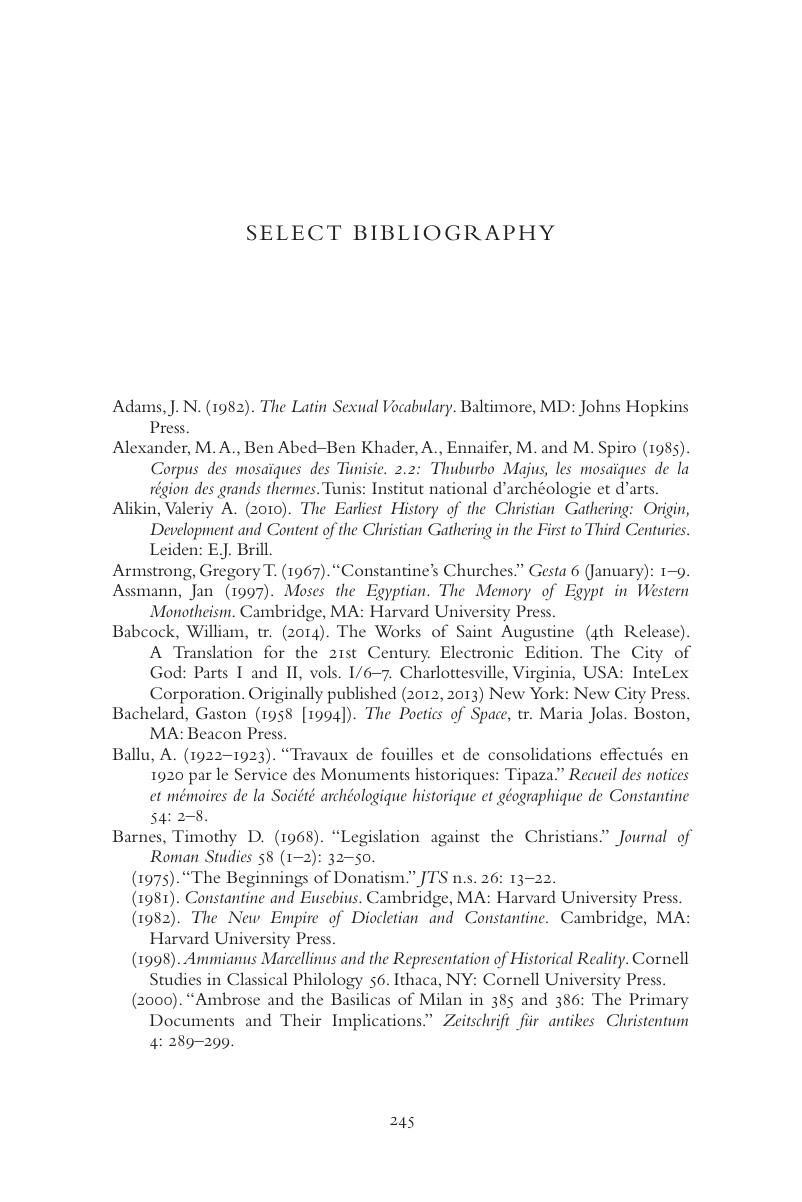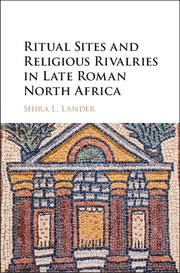Book contents
- Ritual Sites and Religious Rivalries in Late Roman North Africa
- Ritual Sites and Religious Rivalries in Late Roman North Africa
- Copyright page
- Dedication
- Contents
- Illustrations
- Preface
- Abbreviations
- Introduction: Scaffolding
- 1 Foundational Assumptions
- 2 Christian Perceptions of Communal Places
- 3 Internecine Christian Contestation
- 4 Christian Supersession of Traditional Roman Temples
- 5 Christian Supersession of Synagogues
- Conclusion: Ritual Spatial Control, Authority, and Identification
- Select Bibliography
- Index
- References
Select Bibliography
Published online by Cambridge University Press: 17 November 2016
- Ritual Sites and Religious Rivalries in Late Roman North Africa
- Ritual Sites and Religious Rivalries in Late Roman North Africa
- Copyright page
- Dedication
- Contents
- Illustrations
- Preface
- Abbreviations
- Introduction: Scaffolding
- 1 Foundational Assumptions
- 2 Christian Perceptions of Communal Places
- 3 Internecine Christian Contestation
- 4 Christian Supersession of Traditional Roman Temples
- 5 Christian Supersession of Synagogues
- Conclusion: Ritual Spatial Control, Authority, and Identification
- Select Bibliography
- Index
- References
Summary

- Type
- Chapter
- Information
- Ritual Sites and Religious Rivalries in Late Roman North Africa , pp. 245 - 270Publisher: Cambridge University PressPrint publication year: 2016



